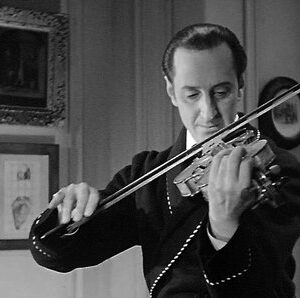During my career as an investigative reporter – and as the wife of an expert in the field of computer-assisted investigative reporting – I have experienced situations that could be distressing if you didn’t realize this is all great material for writing mysteries!
The first occurred early in my career when I was assigned to write a feature on a man who was a “shoo-in” as a candidate for the U.S. Senate. We will call him Mr. M. He was a familiar figure in the city and state – a young, handsome multi-millionaire respected not only for his business acumen but because he was ballyhooed as “the most eligible bachelor” in town. I was tickled to be covering such a neat guy.
Our first interview went well though I did note that he wore lifts in his shoes. Guess he wanted to be taller?
That night I was at a dinner party where I mentioned to a woman friend that I was working on an article about Mr. M. “Really,” she said with an odd expression, “I know him. I used to babysit for him. I suggest you check with this reporter in my hometown for background on Mr. M.”
So I called the newspaper in that city, connected with an award-winning investigative reporter and when I told him whom I was profiling and why (i.e. “he’s also the most eligible bachelor in town….”) – the reporter paused, then said, “That’s interesting because he has a wife and three children down here.”
Our newspaper broke that story. Mr. M lost the election. No U.S. Senate.
One week later, he called me at my office shouting, “I’m suing you for defamation.”
“Try,” I said, “and I’ll sue you for libel.” Of course, I had no idea if I could or not.
A few weeks later, I was in a small private plane, sitting near the pilot, as I was being flown to a political conference I had to cover when the pilot said he had seen my stories on Mr. M. “Something you should know,” said the pilot, “is that Mr. M. keeps his private plane next to mine and I know he does not have it inspected as he should. That plane is going to crash one of these days….” Sure enough, a couple months later Mr. M and five other people died when his plane crashed during a flight to Las Vegas.
Lesson learned: Never trust a person who wears lifts. And learn to spot those people who think they can get away with anything. Until they can’t. Great Material.
*
My next experience occurred ten years later. My second husband, B, also an investigative reporter, was testing the use of database technology – this was in the early eighties before the Internet was so easy to use – and he had decided to explore what was behind a series of small mentions of accidental deaths in our area. We lived near a large East Coast city, which was surrounded by small towns, each of which had their own police force.
B had been keeping track of different death notices that had appeared as “agate” in the major city’s newspaper. “Agate” referred to a brief graph in tiny type stating the date, sex and cause of a victim’s death. B also knew that the different police departments did not, generally, communicate with one another. Again, this was before our major, amazing national databases in use today.
On his own, B reached out to the police departments for more details and then he got started building his own database. I will never forget it as I found him in our den, in the dark, on a hot summer night, inputting the following details:
- Each of nine (!) victims was female, black and between eighteen and thirty years of age
- Each victim was known to the police as having worked as an “escort” or prostitute
- Each victim’s body had been found near an electrical transformer
- Each victim’s cause of death had been listed as “undetermined” but when an autopsy was finally done, each one had been strangled
And so it was that hot summer night that B and I looked at each other in amazement: this was the work of a serial killer! Likely an employee of the local electric company.
What was needed next was to find someone who might have known all the women. And with that information, the various police departments chose to work together. They soon discovered an engineer at the electric company who moonlighted as a “pastor” focused on saving women’s souls. It didn’t take long to determine he had known each of the murdered women. He got life in prison. B, meanwhile, went on to become an expert in the field of computer-assisted reporting.
Lesson learned by me: Keep an eye on the details such as locations, odd coincidences and don’t make early assumptions based on race, education or sex. Look for the obscure, the unexpected – and take notes! That’s when you’ll discover Great Material.
**
Even when you are not working as a reporter, challenging events can occur: happy, sad or perfectly awful. Again, you can choose how to deal with such moments.
The following happened shortly after B and I had moved to a new suburb out east and I had just enrolled my son in the nearby middle school. It was early on a snowy January morning and I was driving him to his first day of school. A neighbor had told me of a shortcut to the school so I was driving a road that ran alongside the high school playing fields when we passed a small sedan that had crashed into a telephone pole. No one was around but that didn’t worry me – I grew up in Wisconsin where drunk drivers often abused telephone poles. I kept going.
After dropping my son off, I returned the same way only to see police officers and men in trench coats gathered around the wrecked sedan. Once home, I called B at the newspaper and told him, “There might be an accident…” at such and such a location. An hour later, he called back quite upset saying, “that was a murder scene. I wish you had told me!” (Translation: he could have broken the story and gotten a raise.)
Turns out there was a dead woman in the car. Had I stopped on my way to the school, I would have found her naked, wearing only panties in the below-zero weather. When the police, two men, first arrived, they reported “an accident.” But minutes later, when they were joined by a female officer, she took one look at the victim and said, “This is no accident. No woman, drunk or depressed, goes driving in weather like this wearing only panties! This is murder.”
At first, the woman’s husband, an OB-GYN at the local hospital, tried to say she had been drinking, they had fought and she had driven off angry. Not true. And this is where the story gets kind of awful. They’d had a fight, all right, and he beat her to death with a statue of the Virgin Mary, dumped her body out their bedroom window onto the driveway — only to realize he better do something to hide his actions. When the autopsy report showed she had died of blunt trauma to the head, he was arrested and convicted of homicide.
But that’s not the end of the story. Years later, I was in Wisconsin and giving a library talk about “things you cannot make up” when a woman in the audience raised her hand.
“I was on that jury,” she said. “And you won’t believe what happened next. The husband got out on appeal, applied to a hospital in another city and was hired as the head of their OB-GYN unit. They never checked his credentials. They hired a murderer!”
Lesson learned: Some stories you can’t make up. Again, Great Material.
***
Finally, on a lighter note, B covered one investigation where he had to interview a forensic pathologist. The source turned out to be a hefty woman wearing scrubs who invited him into her autopsy room. They weren’t alone. Along with the deceased, she had two massive Great Danes she allowed to roam freely.
Lesson utilized: That experience prompted me to conjure up the coroner in my series who is a retired bartender, appointed to his position by his brother-in-law, the Mayor of Loon Lake, and who shows up for official duties “overserved.” Like I said, you can’t make this stuff up.
How to find your Great Material? When writing mysteries don’t hesitate to draw from real life: the unexpected, the amusing, or the horrifying. It is all Great Material.
****


















